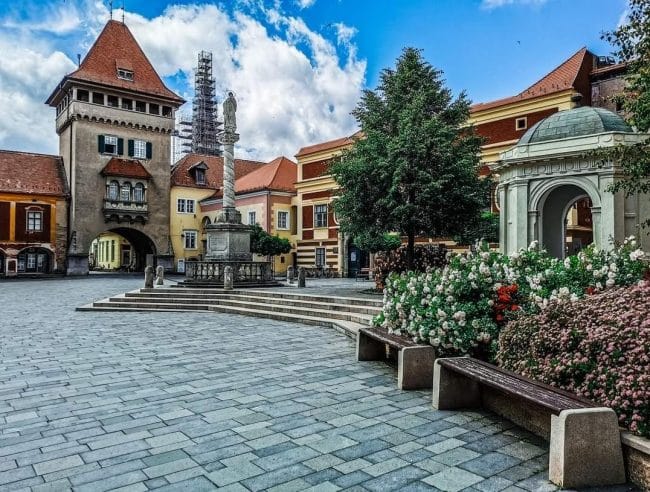Sights of Kőszeg

The historic centre of Kőszeg is rightly called the jewel box of Hungary.
The historic centre of Kőszeg is rightly called the jewel box of Hungary. The Parish Church of Jesus Heart stands out next to the fairytale houses of the Main Square. Construction work began in the spring of 1892, according to the plans of the Viennese architect Ludwig Schöne, and in April 1894 the polychrome painting of the church was completed by the Vienna workshop of Otto Kott. From then on the interior decoration of the church continued until the solemn blessing on 23 September 1894. The consecration of the church was held on 18 June 1944 on the occasion of the 50th anniversary, when the mayor of Kőszeg not only pledged the sanctuary on behalf of the council, but also dedicated the whole town to the protection of the Sacred Heart of Jesus.
Walking further under the Heroes’ Tower to Jurisics Square, past the country’s oldest town hall, we pass the historically significant Jurisics Castle, where we can admire many buildings of historical importance on the short route, such as the Patika Museum, the churches of St. Imre and St. James, and many houses built in Turkish times.
Kőszeg, or Jurisic Castle, is named after its most famous captain. The history of the building goes back a very long time, the first mention of it is found in a document dated 802. The castle was originally Gothic in style, but the Renaissance and Baroque periods have left their mark.
Its structure consists of an outer castle and an inner castle, both surrounded by moats.
Among its many sieges, the most famous was that of Sultan Suleiman against his vast army on its way to Vienna in 1532. The castle captain Miklós Jurisics and his small force, compared to the Turks, surrendered after twenty-five days of battle. Even today, the bell of Kőszeg rings every day at 11 am in memory of the defenders of the castle. The unusual time refers to the time when the last Turkish soldier left the castle during the siege.
Ferdinand Habsburg awarded the captain the rank of baron for his bravery, and the town of Kőszeg was his reward. His son Jurisics died without leaving a successor, and the town was once again under the administration of the royal chamber. From 1695, the manor became the property of the Esterházy family, who owned it until 1931, so it is not by chance that the castle is also called Esterházy Castle. The restoration of the castle took place between 1955 and 1963, but its main reconstruction began in 2011 and lasted 2 years.
